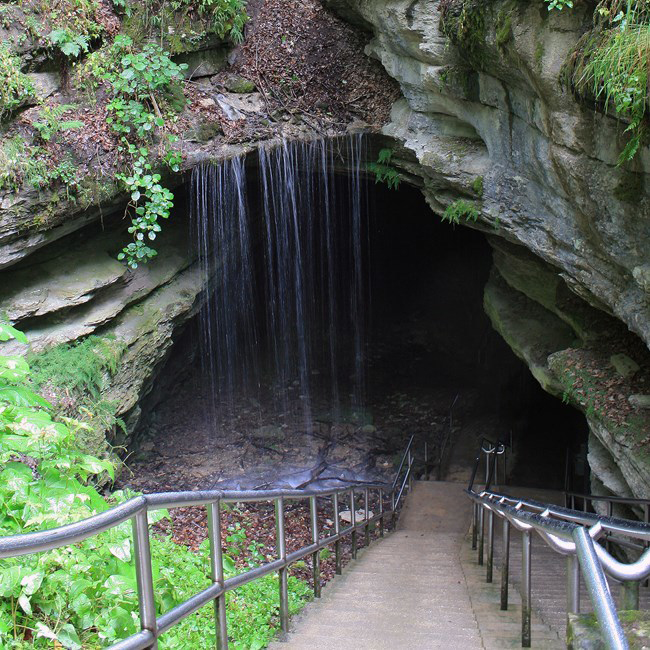
Mammoth Cave. Image courtesy of Mammoth Cave National Park. |
Mammoth Cave National Park in Kentucky, in partnership with the Cave Research Foundation (CRF), announced the addition of eight miles of passageways in Mammoth Cave. The additional mileage was mapped and documented through hours of survey work completed by the CRF and brings the official length of the world’s longest cave to 420 miles.
Mammoth Cave received its official designation as the world's longest cave system in 1969 with 65 miles of surveyed passageways. The connection between the Mammoth Cave system and the Flint Ridge system was discovered on September 9, 1972 by CRF cavers who traveled underground for over fourteen hours. This connection would bring the total mileage of the Mammoth Cave system to 144 miles. In the 49 years since this connection was made, continued assistance from the CRF has led to discovered connections between several smaller caves like Proctor Cave, Roppel Cave and Morrison Cave and the larger Mammoth Cave system, all contributing to the current total surveyed length.
Regarding the partnership between the organizations, CRF Eastern Operations Manager Karen Willmes shared, "Every mile of cave length means that a Cave Research Foundation or Central Kentucky Karst Coalition caver physically visited and surveyed that part of the cave. Many of the cave trips are long and arduous, involving climbing, vertical exposure, squeezes, crawlways, water, and mud. After the trip, cartographers turn the data collected on the cave trip into a map. Other volunteers provide surface support. It's a first-rate effort for a world-class cave, and we're proud to be a part of it."
The CRF is a local, non-profit group founded in 1957. Members of the CRF spent hours crawling, climbing and rappelling through cave passageways, following leads through sometimes very tight openings to document and map Mammoth Cave. Comprised exclusively of volunteers, the group has assisted the park with cave survey work for over 60 years and provided thousands of hours of volunteer work. Increasing access for outdoor recreation, through locally led efforts, is central tenet of the America the Beautiful initiative.

